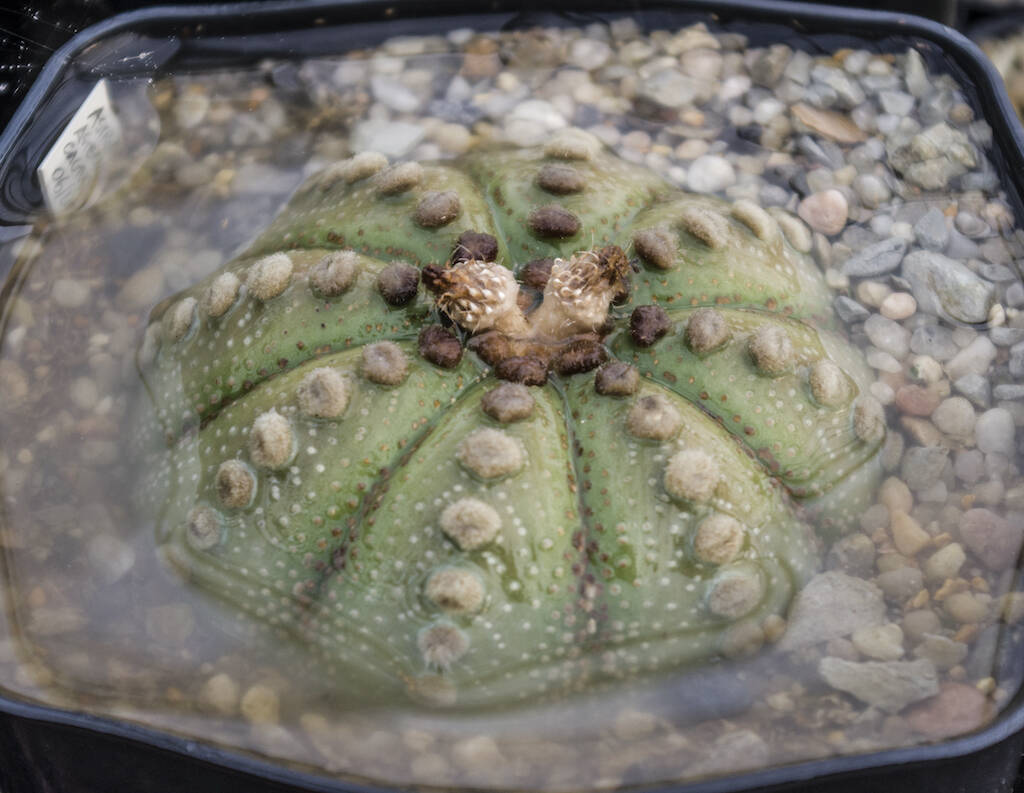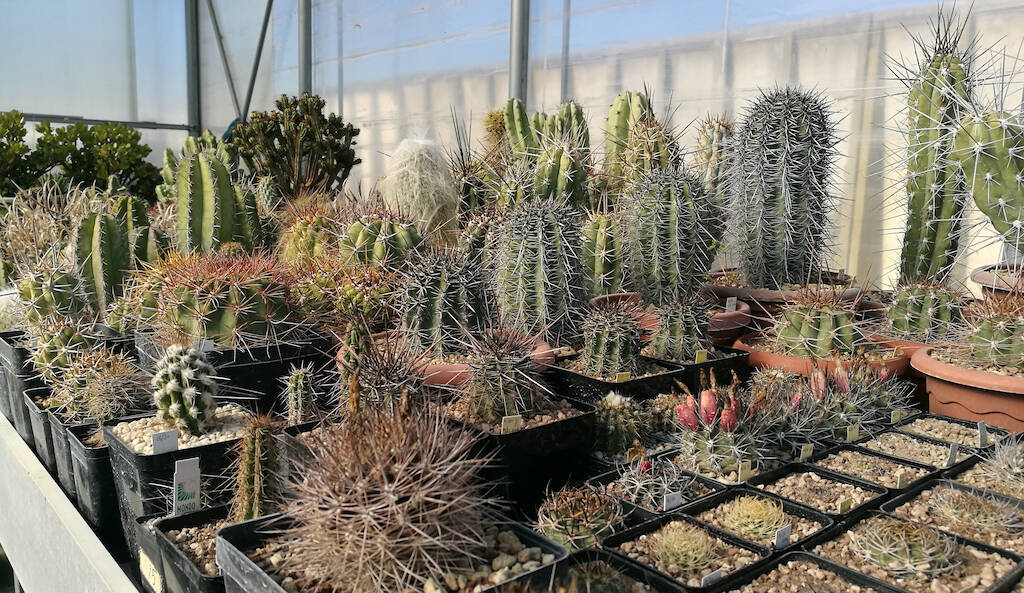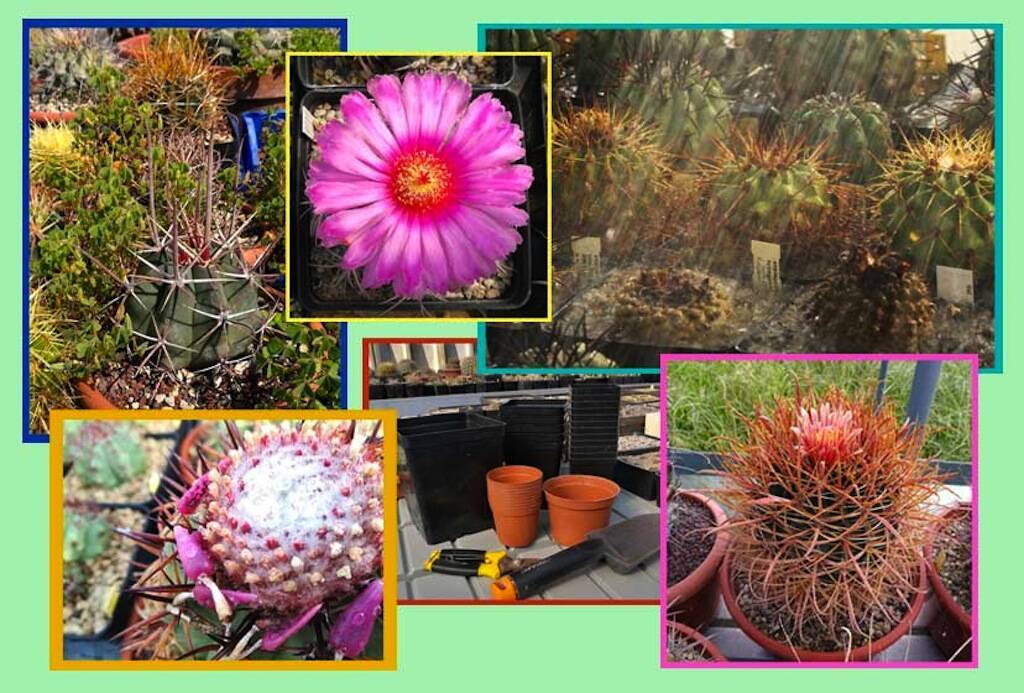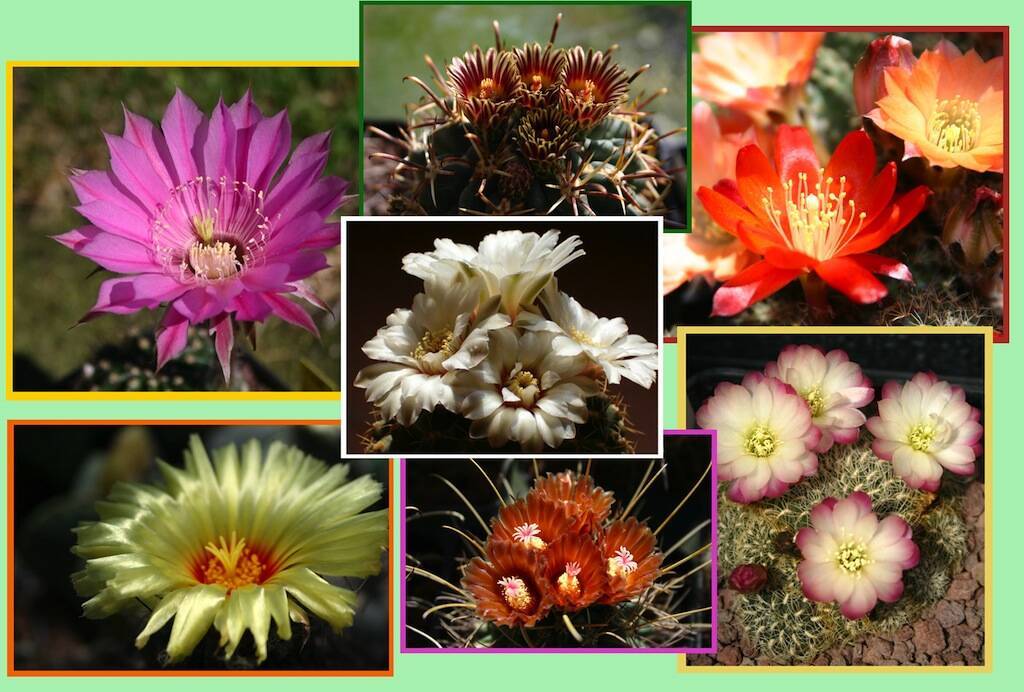Bright blooms, fleshy and brand-new leaves, sparkling spines sprouting from the vegetative apices: for succulent plants, spring represents a real rebirth. Here in Europe, the vegetative stasis that characterizes the winter of most succulent families ends between the second half of February and the beginning of March, when the plants gradually resume vegetation and reactivate the root system. For some families, the restart is evident: this is the case of Cactaceae, which already in February show new spines and often the first flower buds (genera such as Stenocactus, many species of Turbinicarpus, some Mammillaria, etc.). Also, leafy succulents such as Crassula, Echeveria, Portulacaria, Aloe, Adenium are well-known for producing new shoots, new branches and leaves. For other species as the Agavaceae family, the recovery is less evident: it slowly forms fresh sprouts at the centre of the apical rose, destined to be noticed only in a few months, when the separation of the true leaves will take place. Whether the recovery is sudden and flashy or slow and hidden, in March it’s essential to devote some extra care to succulents: in this way, it will be possible to obtain healthy and robust plants that show their full potential development and flowering.
Now let’s see everything we can do at this time of the year, especially if we don’t have a greenhouse and we grow on the windowsill, on the balcony, on a terrace or in the garden. With a warning: whatever you have to do, with succulents and cacti, you must not be in a hurry: hurry to water, hurry to treat, hurry to move the plants… Getting caught up in the rush, the anxiety, the fear of doing something wrong, is the best way to run into mistakes. So let’s see how to avoid them. (…)
Continue reading “Preparing cacti and succulents for spring: exposure, fertilizing, here’s what to do”






